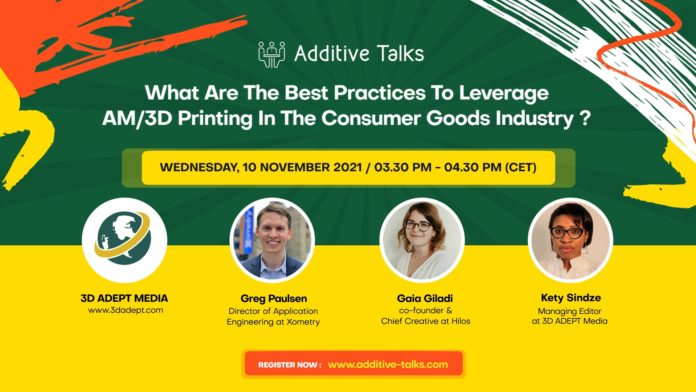A few weeks ago, a colleague of mine asked me: “What is the consumer goods industry?” I remained silent for a few minutes because, I had just realized that we do not categorize all these products (shoes, glasses, clothing, bikes, etc.) we use on a daily basis, as products of the same industry.
We do not use the term “consumer goods”, yet they refer to a category of finished products that are sold to and used by consumers – as opposed to industrial goods that are used by industries, firms or manufacturing plants.
Here is the thing, this category of finished products we use on a daily basis, often drives the industrial manufacturing, and the development of new and advanced processes that may support this niche market hence the need to focus on the manufacturing constraints that surround products development. And engineers know we can’t talk about “product development” without involving the use of Additive Manufacturing.
Most importantly, let us not forget that we are living in an era where the end-users are more and more involved in all stages of the manufacturing process, from the design step until they receive their products. This new modus operandi leads to a shift in the manufacturing paradigm that led some researchers to coin the term “Social Manufacturing”.
What is the place of AM in this shift from “conventional manufacturing” to “social manufacturing”?
The next Additive Talks session, set to take place on Wednesday 10 November, from 03.30 pm to 04.30 CET ambitions to discuss this question by focussing on the “best practices to leverage Additive Manufacturing in the consumer goods industry”. Around this virtual table, two experts from various profiles will debate:

Gaia Giladi, co-founder & Chief Creative at Hilos. Giladi has cumulated various experiences at brands like BCBG Max Azria and St. Roche; but has found her footing in business after her journey at Hybrid Apparel where she designed childrenswear for Target. Her encounter with her cofounder Elias Stahl led to the creation of a Fashion-Tech Footwear brand: Hilos.To date, the organization is on a mission to change the world “so that nothing goes to waste and everything we put in can be taken back”.
The companyuses additive manufacturing to make on-demand, using only what’s needed when it’s needed, and design for disassembly for complete circularity at end-of-life. Giladi’s passion is in creating a platform that makes 3D printing approachable and educating the public about the benefits it can bring to our environment, supply chains, and consumers.
Next to Giladi, we’ll find Greg Paulsen, Director of Application Engineering at Xometry.

Paulsen leads the Applications Engineering team at Xometry, working directly with customers on special case projects that require attention on material selection, design-for-manufacturing, or technical engineering resources. With over fourteen years of experience, he has worked on thousands of manufacturing projects using machining, injection molding, and a variety of additive manufacturing (3D printing) methods. Greg also plays a vital role in vetting new technologies and materials to add to Xometry’s manufacturing portfolio both for the instant quoting engine and their expanding marketplace.
Xometry (Nasdaq: XMTR) is an on-demand manufacturing platform that guarantees quality, consistently low prices, and fast lead times on custom parts. The company creates prototypes and production parts for every industry from medical, aerospace to automotive and consumer goods. Xometry provides instant quoting, manufacturing on demand, and unlimited parallel capacity.
Giladi will bring the user perspective around this table while Paulsen will discuss the manufacturing point of view taking into account both AM and conventional manufacturing processes.
Do you want to discuss the best practices to leverage AM for consumer goods with these experts?


